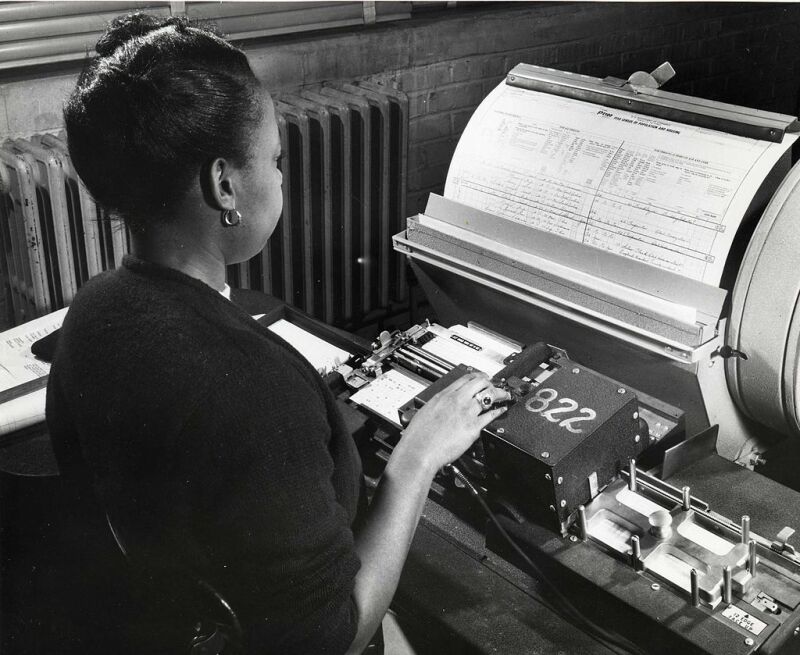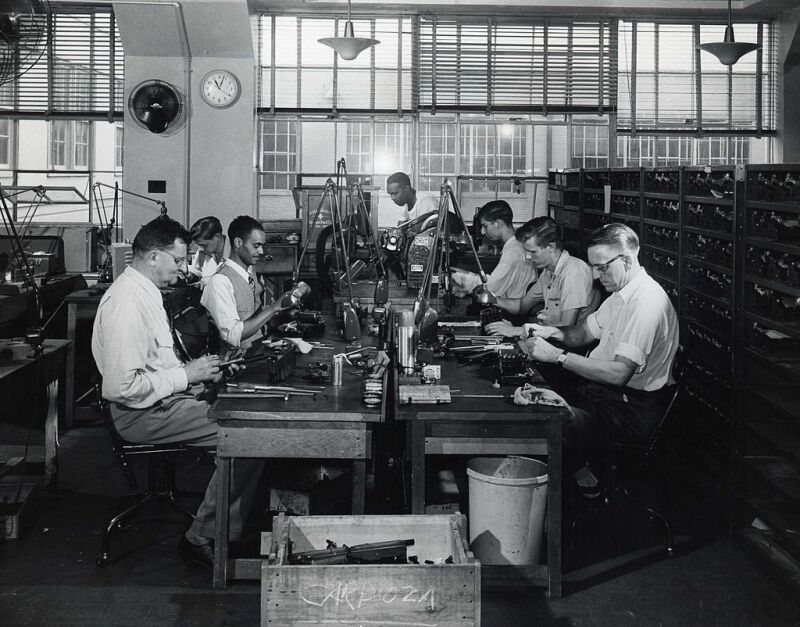We know the 1950 census counted over 150 million inhabitants of the United States and its territories. We also know, by the numbers, where they lived, which areas of the country were growing, and how many residents were married. But because of the 72-year privacy law protecting personal data, the information has been sterile data on simple spreadsheets.
That all changes on 1 April 2022.
That date marks the official release of the 1950 U.S. census by the National Archives and Records Administration. For the first time in history, we’ll see names attached to numbers, and the marvelous stories of our ancestors will become clearer than ever—at least those who were alive in 1950.
Before immersing ourselves in the upcoming 1950 census data, it might be instructive to understand some of the basic changes between it and the 1940 census, which was released to the public in 2012. You can also find a list of all the 1950 census questions below, giving you an idea of what information the 1950 census might have about your ancestors.
As the 1950 community project is completed, the census will also become text-searchable. Visit the 1950 census page on FamilySearch for updates and to help review names.
Differences between the 1940 and 1950 Census Questions
One of the first things you’ll notice when diving into the 1950 data is that several questions were dropped from the 1940 edition. These modest changes were tied to booming labor costs for enumerators and an even more booming population. These modifications included dropping questions about social security numbers and whether those being surveyed were wives, widows, or children of a veteran. A supplemental question on what language was spoken during childhood was also eliminated.

Modified Questions
Given all that transpired around the world between the 1940 and 1950 censuses, important changes were made to the questions about migration. For example, instead of asking where someone lived 5 years prior, enumerators asked where they lived just 1 year earlier. The rationale is clear—in 1945 (5 years prior), millions of American men were overseas engaged in World War II.
Other changes were made to questions on education, marriage, and accounting for America’s transient population.
More Accurate Answers to Questions

In addition to the changes in the census itself, 1950 also marked a welcome shift toward greater planning, training, and supervision during census taking. To improve the quality of the data, officials began preparing earlier than ever. Twenty-six chief instructors were tasked with training several hundred instructors, who would then train 8,300 crew leaders. By the time the census launched, 140,000 enumerators were ready to complete the most accurate count in history.
Finally, once the census was complete, for the first time in history, officials deployed specialized interviewers to conduct a quality check of about 22,000 households. As expected, the census record set a new standard.
What Questions Did Government Enumerators Ask in 1950?
- Name of street, avenue, or road where the household is located
- Home or apartment number
- Serial number of dwelling unit
- Is this house on a farm (or ranch)?
 Image courtesy of the United States Census Bureau
Image courtesy of the United States Census Bureau - If no, is this house on a place of three or more acres?
- Corresponding agriculture questionnaire number
- Name
- Relationship to head of household
- Race
- Sex
 Image courtesy of the United States Census Bureau
Image courtesy of the United States Census Bureau - How old was this person on his last birthday?
- Is this person now married, widowed, divorced, separated, or never married?
- Enumerators were to enter "Mar" for married, "Wd" for widowed, "D" for divorced, "Sep" for separated, or "Nev" for never married.
- What state or country was the person born in?
- If foreign born, is the person naturalized?
For persons 14 years of age and over:
- What was this person doing most of last week—working, keeping house, or something else?
- Enumerators were to record "Wk" for working, "H" for keeping house, "U" for unable to work, or "Ot" for other.
 Image courtesy of the United States Census Bureau
Image courtesy of the United States Census Bureau
- Enumerators were to record "Wk" for working, "H" for keeping house, "U" for unable to work, or "Ot" for other.
- If the person was "keeping house" or "something else" in question 15, did the person do any work at all last week, not counting work around the house? (Including work-for-pay, in his own business, working on a farm, or unpaid family work)
- If the person answered "no" to question 16, was he looking for work?
- If the person answered "no" to question 17, even if he didn't work last week, does he have a job or business?
- If the person was working, how many hours did he or she work in the last week?
- If employed, describe the job or business he held last week.
- What kind of work does the person do?
- What kind of business or industry is the person in?
- Class of worker the person is.
- Enumerators were to mark "P" for private employment, "G" for government employment, "O" for own business, or "NP" for working without pay.
Supplemental Questions (for a 5 percent sample of the population)
For all ages:
- Was the person living in the same house a year ago?
- If no to question 21, was the person living on a farm a year ago?
- If no to question 21, was the person living in the same county a year ago?
- If no to question 23...
- What county (or nearest place) was he living in a year ago?
- What state or foreign country was he living in a year ago?
 Image courtesy of the United States Census Bureau
Image courtesy of the United States Census Bureau
- What country were the person's mother and father born in?
- What is the highest grade of school that the person has attended?
- Enumerators were to mark "0" for no school; "K" for kindergarten; "S1" through "S12" depending on the last year of elementary or secondary school attended; "C1" through "C4" depending on the last year of undergraduate college education attended, or "C5" for any graduate or professional school.
- Did the person finish this grade?
- Has the person attended school since February 1?
- Enumerators could check a box for "yes" or "no" for those under 30; for those over 30, they were to check a box for "30 or over."
For persons 14 years and older:
- If the person is looking for work, how many weeks has he been looking for work?
- Last year, how many weeks did this person not work at all, not counting work around the house?
- Income received by this person in 1949:
- Last year, how much money did the person earn working as an employee for wages or salary?
- Last year, how much money did the person earn working at his own business, professional occupation, or farm?
- Last year, how much money did the person receive from interest, dividends, veteran's allowances, pensions, rents, or other income (aside from earnings)?
 Image courtesy of the United States Census Bureau
Image courtesy of the United States Census Bureau
- If this person is the head of the household:
- Last year, how much money did his relatives in this household earn working for wages or salary?
- Last year, how much money did the person earn working at his own business, professional occupation, or farm?
- Last year, how much money did the person receive from interest, dividends, veteran's allowances, pensions, rents, or other income (aside from earnings)?
- If male: did he ever serve in the U.S. Armed Forces during...
- World War II
- World War I
- Any other time, including present service
- To enumerator: if the person worked in the last year, is there any entry in columns 20a, 20b, or 20c?
- If yes, skip to question 36; if no, make entries for questions 35a, 35b, and 35c.
- What kind of work did this person do in his job?
- What kind or business or industry does this person work in?
- Class of worker
- If ever married, has this person been married before?
- If married, widowed, divorced, or separated, how many years since this event occurred?
- If female and ever married, how many children has she ever borne, not counting stillbirths?
More Census Resources
- To view the complete 1950 census questionnaire, visit census.gov.
- Browse 1950 U.S. census images by enumeration district using an interactive map.
- For more news and helpful information about the 1950 census, visit the 1950 U.S. Census Page on FamilySearch.










